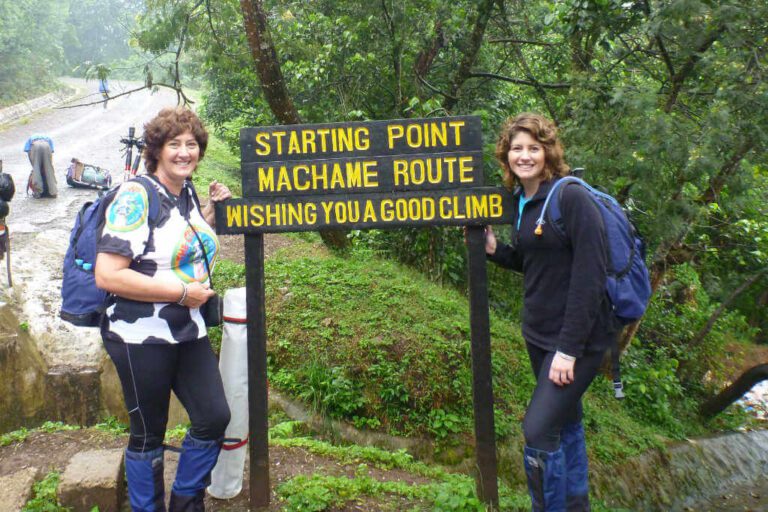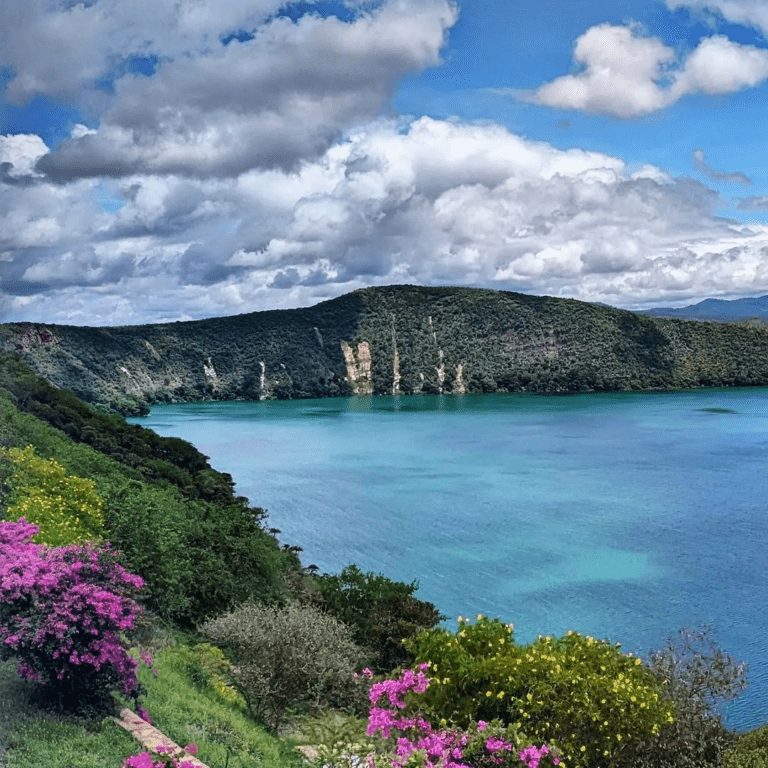In northern Tanzania, near the saltwater shores of Lake Eyasi, lives one of the last remaining hunter-gatherer tribes in Africa: the Hadzabe tribe. They number fewer than 1,500 and have resisted assimilation into modern agricultural society. In the Lake Eyasi area in Tanzania, about 200-400 tribe members still live a true nomadic lifestyle. They speak Hadzane, a unique click language that also includes popping sounds and is almost impossible for Westerners to imitate.

They do not farm, herd animals, or build permanent settlements. Their survival is rooted in mobility, ecological knowledge, and group cooperation. While the modern world debates sustainability and simplicity, the Hadzabe have lived those principles for millennia. Their way of life has been maintained for tens of thousands of years — not because of isolation, but by choice. Their existence presents not only a historical curiosity, but a mirror reflecting practices and mindsets that our modern society has largely forgotten.
Meeting the hadzabe tribe at one of their camps and getting a glimpse of their everyday lives can be a valuable lesson and it is fun at the same time. The tribe members are very friendly, social and eager to show you their world and take you on a hunt with them. In this article, we explore what we can learn from the Hadzabe and how to respectfully experience their unique culture on your Tanzanian journey.

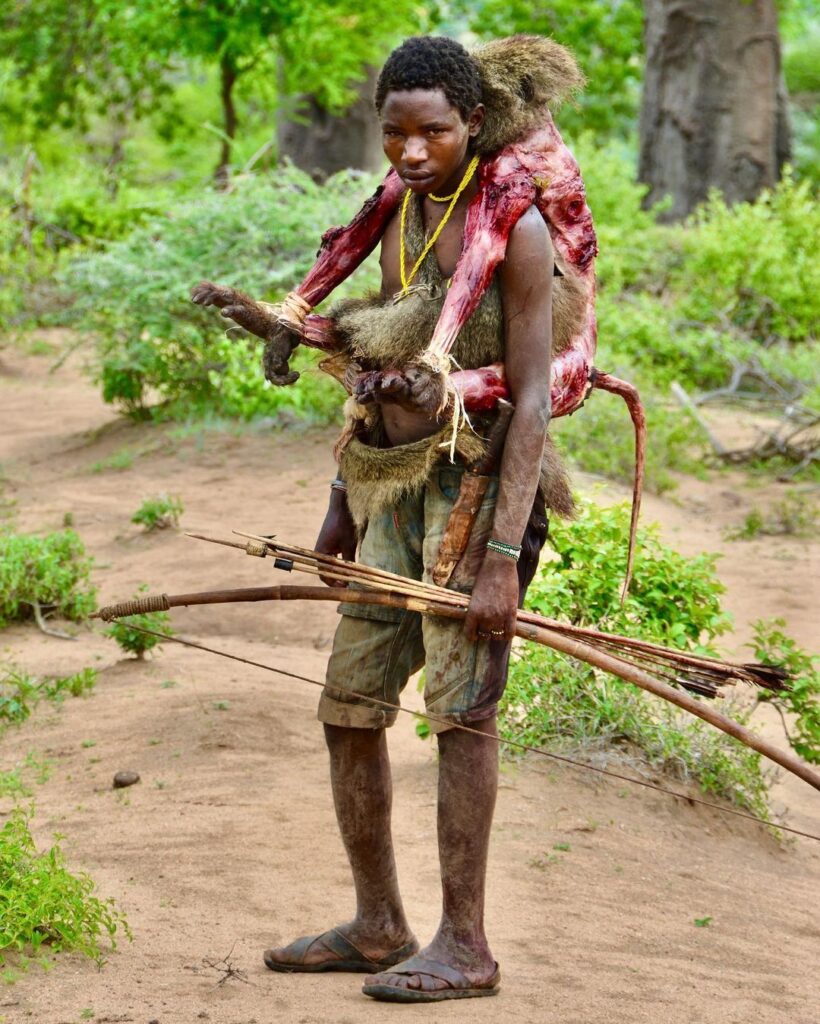
Core Lessons from the Hadzabe Tribe
1. They solely live off the land and in harmony with nature
The Hadzabe tribe have been living in harmony with nature for thousands of years, they see themselves as protectors of the land. They use plants as medicine and food, and hunt animals to survive. Their impact on the environment is almost invisible and they have no carbon footprint. To find honey, Hadzabe sometimes collaborate with the honeyguide bird – whistling back and forth until the bird has lead them to a beehive. Once the Hadzabe smoke out the bees and harvest the honey, the bird gets the honeycomb.
The Hadzabe take what the land offers without depleting it. They don’t stockpile, overhunt, or modify the environment. If resources in one area are low, they move on. This sustainable relationship with nature keeps their ecosystem intact and biodiverse.In a world where climate change is driven by overconsumption, the Hadzabe model a system where survival and environmental balance are inseparable.
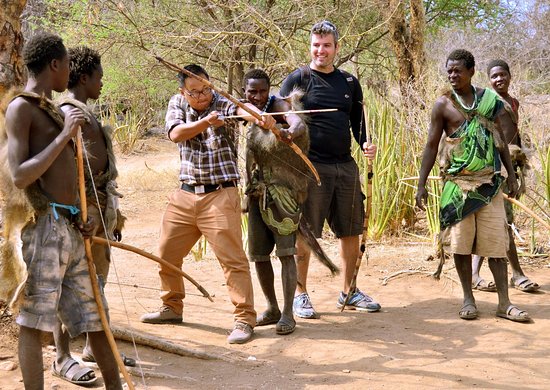
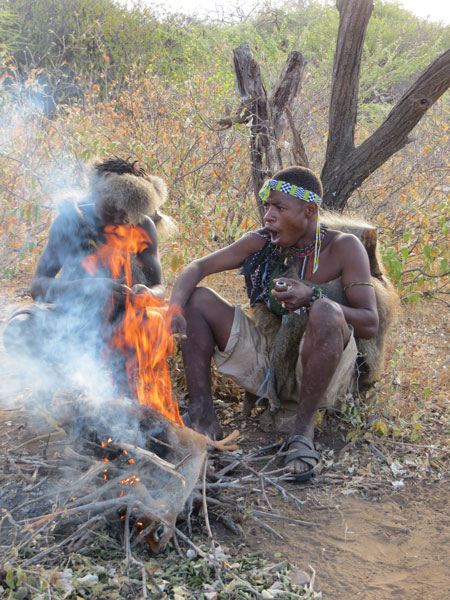
2. They live in the present and do not worry about the future
The Hadzabe live a free life. Free of most social duties. Free from religious strictures. Free of many family responsibilities. Free from schedules, jobs, bosses, bills, traffic, taxes, laws, news, and money. Free from worry. They enjoy an extraordinary amount of leisure time and do not think about tomorrow – they do not keep track of time and live without calendars. They have no words for the days of the week, or months of the year; their sense of time depends only on the wandering animals and the shifting patterns of their flowering plants. Their ages are estimated by occurrences or events that happened around their births, not by numbers. They do not stress out about what they will eat tomorrow – they take each day as it comes and trust that what they need will be provided by nature.
The Hadzabe don’t accumulate belongings. Tools are simple and handmade. Shelter is temporary. Their lives are defined by use, not ownership. There’s no waste. No surplus. Unlike modern minimalism that is often framed as a lifestyle choice, the Hadzabe tribe simplicity is practical, necessary, and remarkably efficient.

3. They live in harmony with each other
The Hadzabe tribe live in small, close-knit camps of around 20 to 30 people, often made up of families, in-laws, and friends. Life in these camps is peaceful and cooperative. Everyone plays a role in raising children, who are loved and cared for by the entire community. Men and women work together to build the grass huts that make up the camp, reflecting their deep sense of unity.
Each camp usually has a leader, but this person holds no special power. Leaders are chosen for their wisdom, intelligence, and courage. Their responsibility is to solve problems, treat everyone with respect, and maintain peace. The Hadzabe value individual freedom, and no adult has authority over another.
Women have a strong voice in Hadzabe society. They often make the final decision on important matters and may choose who keeps the children in case of a divorce.Several times a year, different Hadzabe camps gather to reconnect, share ideas, compete in target practice, and celebrate with singing and dancing. Some Hadzabe women have married outside the tribe, but many return, drawn back by the tribe’s simple and harmonious way of life that does not require them to submit to their husbands as seen in many other cultures.

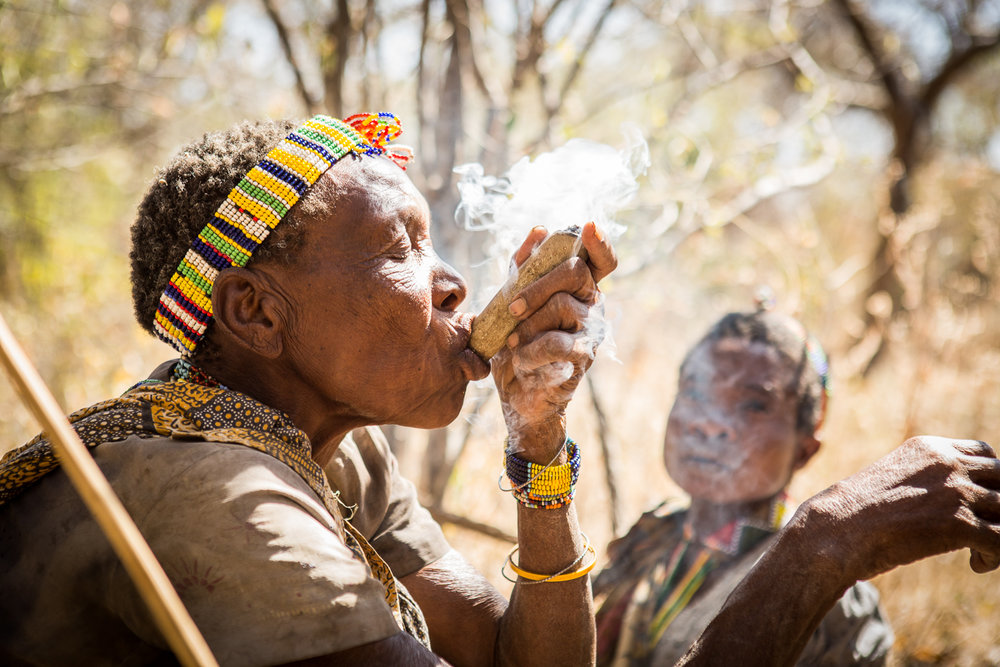
4. They live almost entirely free of possessions and only take what they need
The Hadzabe lead an entirely nomadic and subsistence-based lifestyle. Unlike neighboring tribes, they do not practice farming, raise livestock, or build permanent homes. Their survival depends solely on what they can hunt or gather on a daily basis—animals, wild fruits, roots, tubers, and honey. They consume what they collect the same day and never store food for the future. Ownership is minimal: typically, a Hadzabe individual may carry a cooking pot, a water container, a simple axe, and essential hunting tools like bows and arrows.
They will not hunt again until their previous catch has been fully consumed, reflecting a deep, unwritten principle of balance with nature. Their lightweight possessions and portable lifestyle allow them to move easily through the bush in search of food, water, and shelter, maintaining a way of life that has changed little for thousands of years.
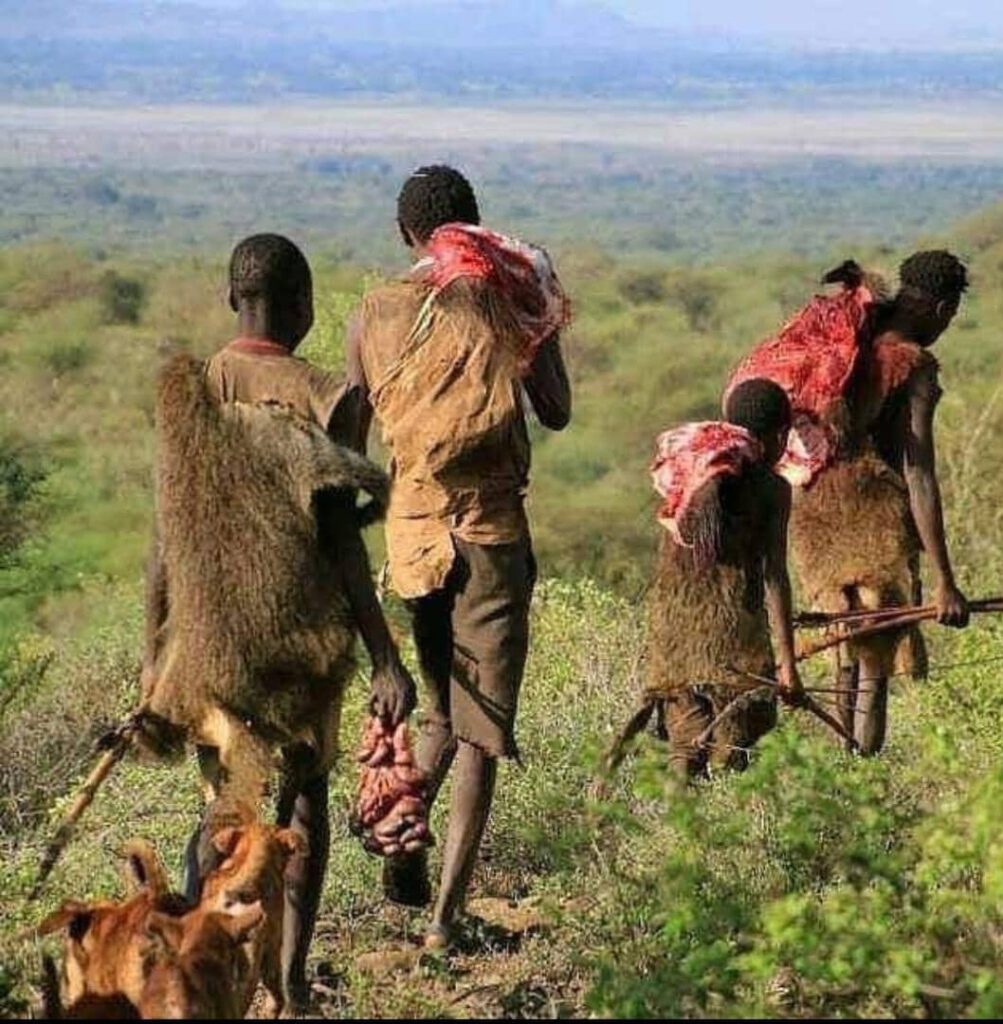
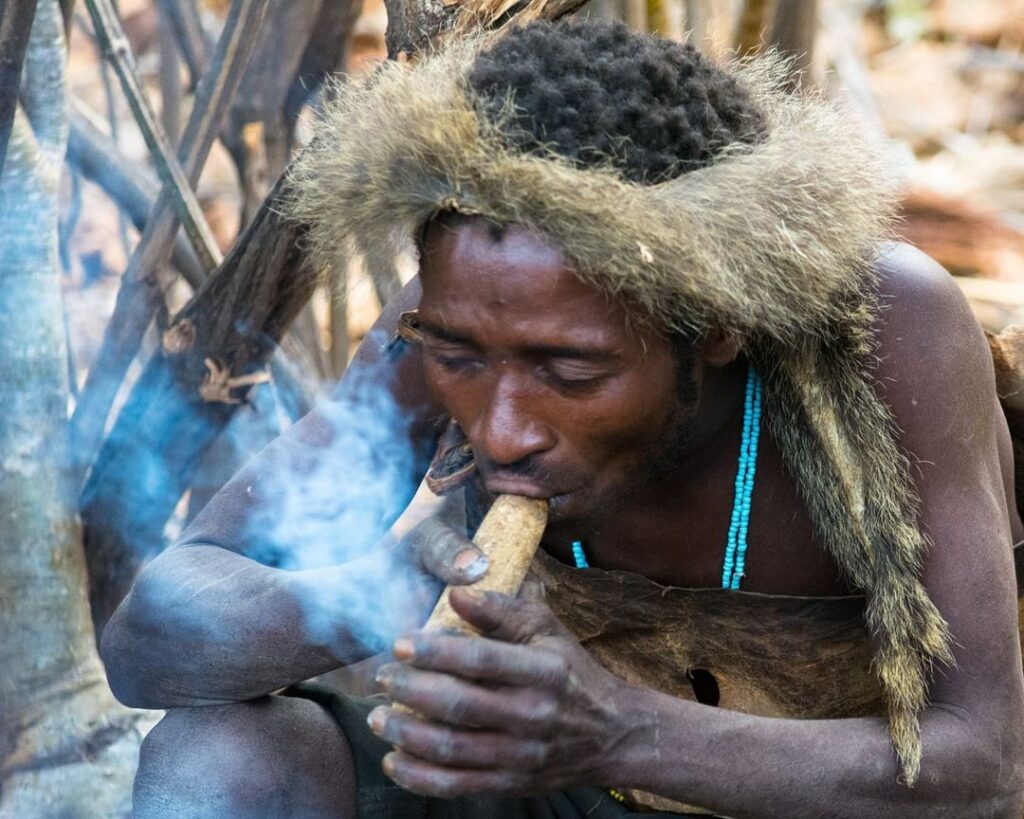
5. They Hadzabe Tribe share everything
Once the men come back from a hunt, everything they have caught gets shared among the elders, women and children in the tribe. Whoever has killed an animal, does not show off – it is considered a communal achievement. The same goes for the fruits/berries the women have foraged for throughout the day.
6. They teach us about our roots/ancestors
Genetic studies suggest the Hadzabe may represent one of the earliest branches of the human family tree, potentially tracing back over 100,000 years. Engaging with them offers a rare glimpse into a lifestyle that predates agriculture by millennia. Despite growing external pressures, the Hadzabe have preserved their language, oral traditions, and nomadic way of life. They shelter near caves, sleep by fires using animal skins for warmth, and hunt with bows and arrows. Fire is still made by hand, and elders pass down ancestral stories, often with moral teachings. While some wear modern clothing, traditional practices remain strong, especially during communal life and hunting activities. Whistling is used to communicate across distances in the bush.
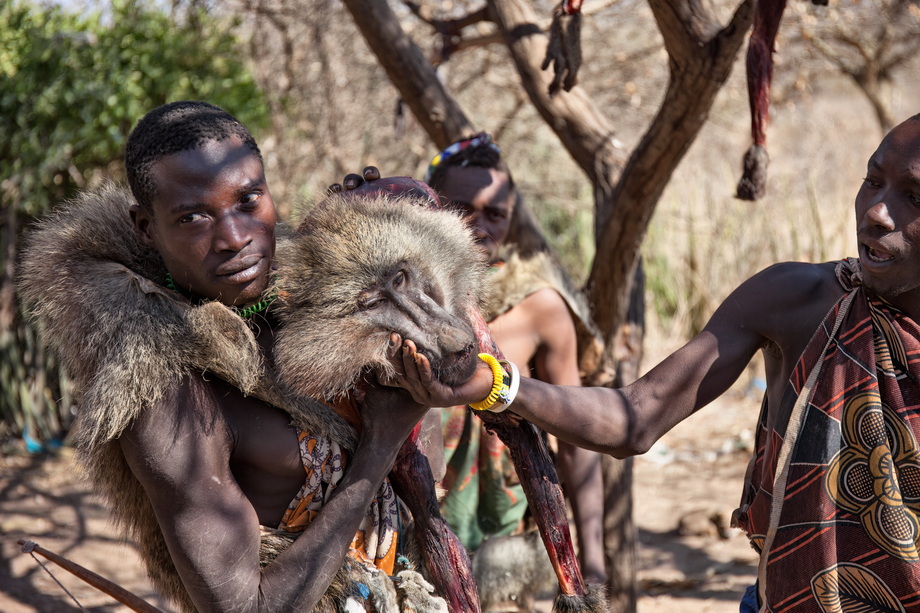
7. They have never been at war and have never suffered from major diseases.
They are peaceful people who almost always moved away rather than fight with anyone. They’ve never lived densely enough to be seriously threatened by an infectious outbreak.
They have no known history of famine; rather, there is evidence of people from a farming group coming to live with them during a time of crop failure. The Hadza diet remains even today more stable and varied than that of most of the world’s citizens.


Challenges Facing the Hadzabe Tribe Today
Despite the strength of their traditions, the Hadzabe face increasing pressure:
- Encroachment: Agricultural expansion and pastoralist migration have reduced their traditional hunting territories.
- Climate Change: Shifting weather patterns threaten wild food availability.
- Cultural Erosion: Tourism, media exposure, and schooling systems can unintentionally pressure youth to abandon Hadzabe identity.
- Land Rights: While Tanzania has made efforts to protect indigenous rights, legal enforcement remains inconsistent.
Without stronger protections, their autonomy and survival are at risk — not due to internal failure, but external pressure.
Visiting the Hadzabe Responsibly
Visiting the Hadzabe tribe in Tanzania can be meaningful, but only if done with care and respect. At African Delight Safaris, we offer guided tours to Lake Eyasi that prioritize consent, cultural preservation, and benefit to the local community as we value responsible tourism in Tanzania
Responsible tourism practices include:
- Going through licensed operators with community partnerships
- Never offering money or goods directly to individuals
- Always asking before taking photographs
- Avoiding tours that commodify or exploit cultural rituals
- Supporting long-term projects that benefit the tribe (healthcare, education, advocacy)
A cultural tour should never reduce a people to entertainment. The purpose is connection, not consumption.
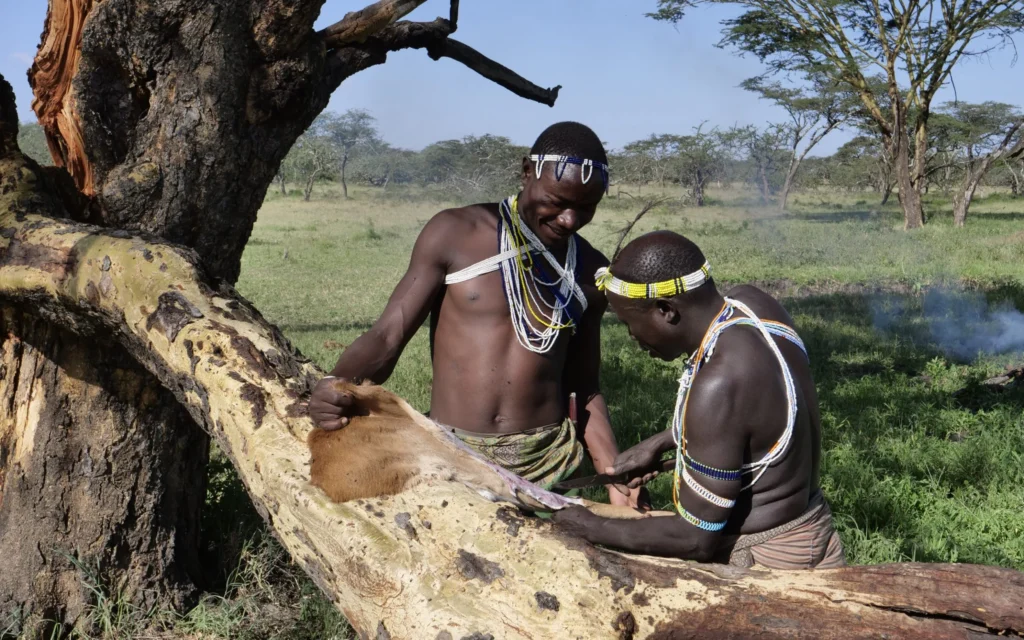
The Hadzabe tribe is not a relic of the past. Their continued survival challenges many assumptions about progress, wealth, and development. From how we consume, to how we live in community, to how we relate to the land — the Hadzabe offer lessons that are increasingly relevant in today’s global context.
Their knowledge is not primitive. It is adaptive, resilient, and deeply informed. Listening to the Hadzabe is not about nostalgia; it’s about recognizing that there are still other, perhaps wiser, ways to live.
Ready to Visit?
African Delight Safaris offers tailor-made tours that include ethical, culturally sensitive visits to the Hadzabe people near Lake Eyasi. Combine it with Ngorongoro Crater, Serengeti, or Tarangire for a complete Northern Circuit experience.
Contact us today to create a safari that connects wildlife with culture, and tourism with purpose.




